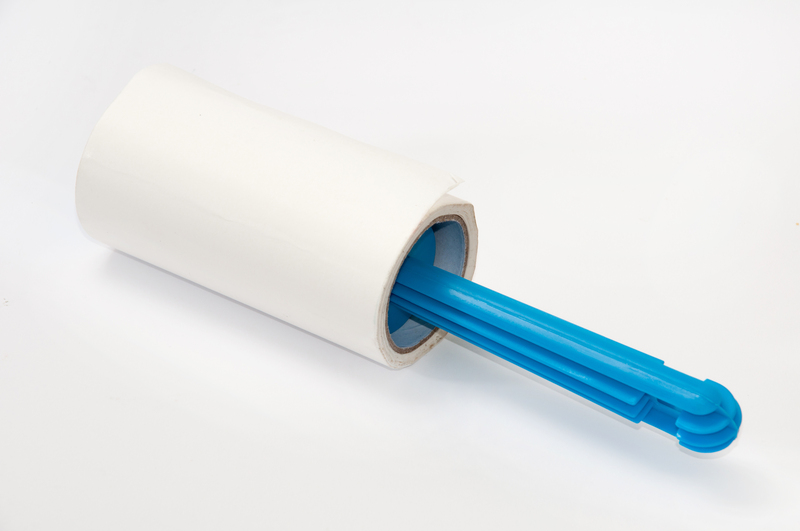Keep Your Window Sills Clear of Mould
Posted on 30/05/2025
Keep Your Window Sills Clear of Mould: A Comprehensive Guide
If you're like most homeowners or renters, your window sills are often overlooked until a problem arises. One of the most common - and potentially dangerous - issues in this area is mould. Keep your window sills clear of mould not just for aesthetics, but for the health and safety of everyone under your roof. In this article, we delve into the causes of window sill mould, the risks it poses, proactive solutions, and ongoing care to ensure window sills remain mould-free.

What is Mould?
Mould is a type of fungus that thrives in moist environments. It reproduces by releasing tiny spores that float through the air and settle on damp surfaces. When these spores find a suitable environment--such as a wet window sill--they begin to grow and colonize, rapidly spreading if left unchecked.
Why Does Mould Grow on Window Sills?
Window sills are prime real estate for mould growth, and here's why:
- Condensation: Temperature differences between the outdoors and indoors often cause condensation on windows, letting water collect on sills and caulking.
- Lack of ventilation: Stagnant air prevents moisture from evaporating, feeding mould spores.
- Poor insulation: Cold sills invite moist air to turn into water droplets, especially in older homes.
- Accidental spills or leaks: Overwatered plants, rain coming through poorly sealed windows, or unnoticed caulking cracks bring persistent dampness.
Why You Should Keep Your Window Sills Clear of Mould
Hidden Health Dangers
The presence of mould on your window sills isn't just unsightly. It can pose significant health risks. Mould spores can cause:
- Allergic reactions (sneezing, itchy eyes, sore throat)
- Asthma attacks and respiratory issues
- Skin irritation
- Worsening of existing health problems, especially in children, the elderly, and those with compromised immune systems
Even small patches can impact indoor air quality, affecting everyone at home.
Structural Damage to Window Sills
Mould feeds on organic material - including wood and some paints. If not removed promptly, it can weaken window sills, lead to rot, and damage caulking, requiring expensive repairs or replacements.
Decreased Property Value
Mould problems can decrease home value and complicate property sales or rentals. Prospective buyers and tenants often view mould as a major red flag.
Signs of Mould on Window Sills
Early detection is crucial. Look out for:
- Black, green, or brown spots on the window sill or caulking
- Musty, earthy odours around the window area
- Peeling paint or soft, bubbling wood
- Condensation or visible moisture droplets
If you notice any of these, it's time to clear your window sill of mould immediately.
How to Remove Mould from Window Sills
Safety First
- Wear rubber gloves, a mask, and eye protection.
- Open windows for ventilation if possible.
- Keep pets and children away from the area.
Step-by-Step Cleaning Guide
- Vacuum loose spores: Use a vacuum with a HEPA filter to remove loose spores - dispose of the bag straight away.
- Mix a cleaning solution: Combine one part white vinegar (or hydrogen peroxide) with one part water in a spray bottle. *Never mix vinegar with bleach.*
- Spray and rest: Spray the solution onto the mouldy areas and let it soak for 10-15 minutes.
- Scrub: Use a non-abrasive brush or sponge to scrub away the mould.
- Rinse and dry: Wipe down with clean water and thoroughly dry the area with a towel or fan.
- Dispose: Safely discard cleaning materials and gloves.
Avoid using bleach on wood. While bleach can kill surface mould on non-porous materials, it rarely penetrates wood and may actually cause damage, making vinegar or hydrogen peroxide better choices.
How to Prevent Mould on Your Window Sills
Reduce Moisture and Humidity
- Ventilate daily: Open windows for at least a few minutes each day to let moist air escape.
- Use a dehumidifier: Particularly in areas prone to damp, such as basements and bathrooms.
- Wipe condensation: After cooking, showering, or cold nights, check sills and wipe up pooled water immediately.
Regular Checks and Maintenance
- Inspect caulking and seals: Every few months, look for cracks and reapply caulk as needed to keep water out.
- Keep sills clear: Avoid piling objects on windowsills, which can trap moisture and hide developing mould.
- Trim plants: Houseplants near windows may drop soggy leaves onto sills. Keep them trimmed and in trays.
- Clean regularly: Dust and wipe down sills as part of your routine cleaning, using a vinegar spray for added protection.
Insulate Windows
- Consider double-glazing or storm windows to minimize condensation.
- Weather-strip windows to prevent drafts and heat loss.
- Use thermal curtains to reduce temperature variance on cold nights.
Eco-Friendly Methods to Keep Window Sills Clear of Mould
Many households prefer non-toxic solutions for keeping their homes mould-free. The best natural methods include:
- Vinegar: Acts as a mild acid, killing most types of household mould.
- Hydrogen peroxide (3%): Sprayed on and left for 10 minutes, then wiped away.
- Baking soda: Combined with water, it's excellent for scrubbing and deodorizing.
- Essential oils (such as tea tree or clove oil): Add a few drops to your cleaning solution for added anti-fungal action.
Common Mistakes When Handling Mould on Window Sills
- Ignoring small patches: Mould spreads quickly if not addressed immediately.
- Painting over mould: This only hides the issue and may make the problem worse.
- Not addressing the moisture source: Unless you fix what's causing humidity, mould will return.
- Inadequate cleaning: Insufficient scrubbing or using the wrong cleaner can allow spores to regrow.
Should You Replace Mouldy Window Sills?
In severe cases where window sills are soft, crumbling, or deeply stained, cleaning may not be enough. Replacement is sometimes the only option for maintaining a safe, attractive home.
- Wood rot and deep mould: If mould penetrates the wood, structural integrity can be lost.
- Frequent regrowth: Persistent mould despite repeated cleaning signals an underlying issue - consult a professional for assessment and repair.
Professional Help for Persistent Mould
For extensive or recurring mould outbreaks, especially involving black mould (Stachybotrys chartarum), it's wise to call a mould remediation specialist.
- They can identify hidden sources of moisture.
- Professionals use specialized equipment to safely remove mould and treat affected surfaces.
- They provide guidance for preventing future outbreaks.
Seasonal Tips to Keep Window Sills Free from Mould
Spring and Summer
- Humid climates mean increased mould risk. Use air conditioning or dehumidifiers if you notice persistent moisture.
- Open windows when outdoor air is dry, but be cautious of rain or mist coming in.
Autumn and Winter
- Moist indoor air and cold glass promotes condensation - regularly wipe sills in the morning.
- Check windows for leaks before wet or freezing weather arrives.
- Consider using insulated curtains to keep sills warm and dry.

Frequently Asked Questions About Window Sill Mould
-
Can I use bleach to remove mould?
Bleach is best reserved for non-porous surfaces. On wood, it often misses mould roots and may damage paint or finish. Vinegar or hydrogen peroxide are safer choices. -
Is all window sill mould toxic?
Not all mould is highly toxic, but it should always be removed quickly to protect your health. -
Can I prevent mould with regular cleaning alone?
Regular cleaning helps, but you must also reduce humidity and fix leaks for long-term results.
Conclusion: Make Mould-Free Window Sills a Routine Priority
Protect your investment, health, and peace of mind by making a habit to keep your window sills clear of mould. With routine cleaning, moisture control, and attentive maintenance, you can keep your home's air fresh and windowsills looking like new.
- Act fast when you spot mould.
- Address the root causes - moisture and poor ventilation.
- Reach out to professionals if the problem persists.
With just a little attention and the right preventive steps, keeping your window sills mould-free will soon be second nature - ensuring a cleaner, safer, and more beautiful home for all.




